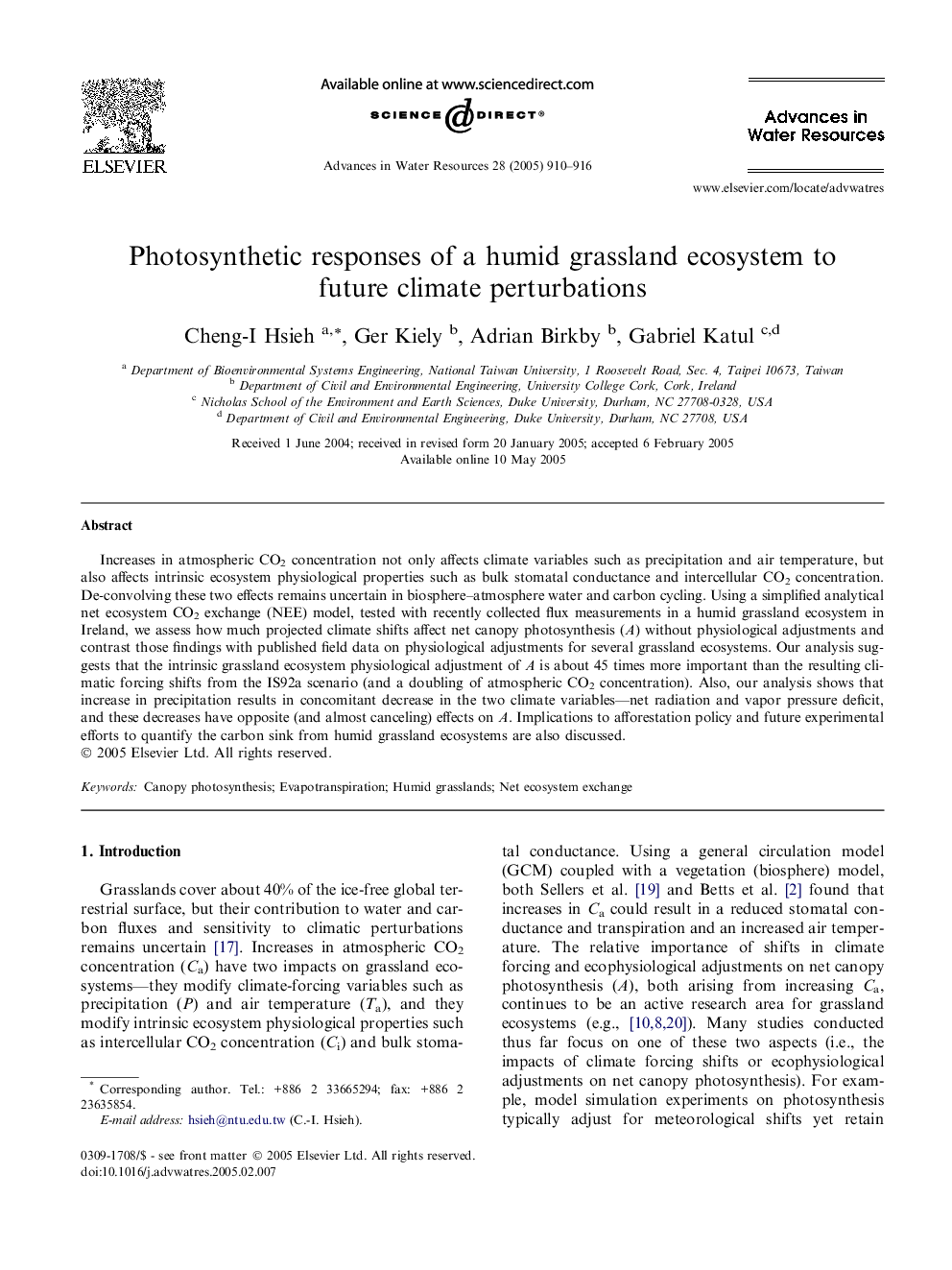| Article ID | Journal | Published Year | Pages | File Type |
|---|---|---|---|---|
| 9476835 | Advances in Water Resources | 2005 | 7 Pages |
Abstract
Increases in atmospheric CO2 concentration not only affects climate variables such as precipitation and air temperature, but also affects intrinsic ecosystem physiological properties such as bulk stomatal conductance and intercellular CO2 concentration. De-convolving these two effects remains uncertain in biosphere-atmosphere water and carbon cycling. Using a simplified analytical net ecosystem CO2 exchange (NEE) model, tested with recently collected flux measurements in a humid grassland ecosystem in Ireland, we assess how much projected climate shifts affect net canopy photosynthesis (A) without physiological adjustments and contrast those findings with published field data on physiological adjustments for several grassland ecosystems. Our analysis suggests that the intrinsic grassland ecosystem physiological adjustment of A is about 45 times more important than the resulting climatic forcing shifts from the IS92a scenario (and a doubling of atmospheric CO2 concentration). Also, our analysis shows that increase in precipitation results in concomitant decrease in the two climate variables-net radiation and vapor pressure deficit, and these decreases have opposite (and almost canceling) effects on A. Implications to afforestation policy and future experimental efforts to quantify the carbon sink from humid grassland ecosystems are also discussed.
Related Topics
Physical Sciences and Engineering
Earth and Planetary Sciences
Earth-Surface Processes
Authors
Cheng-I Hsieh, Ger Kiely, Adrian Birkby, Gabriel Katul,
